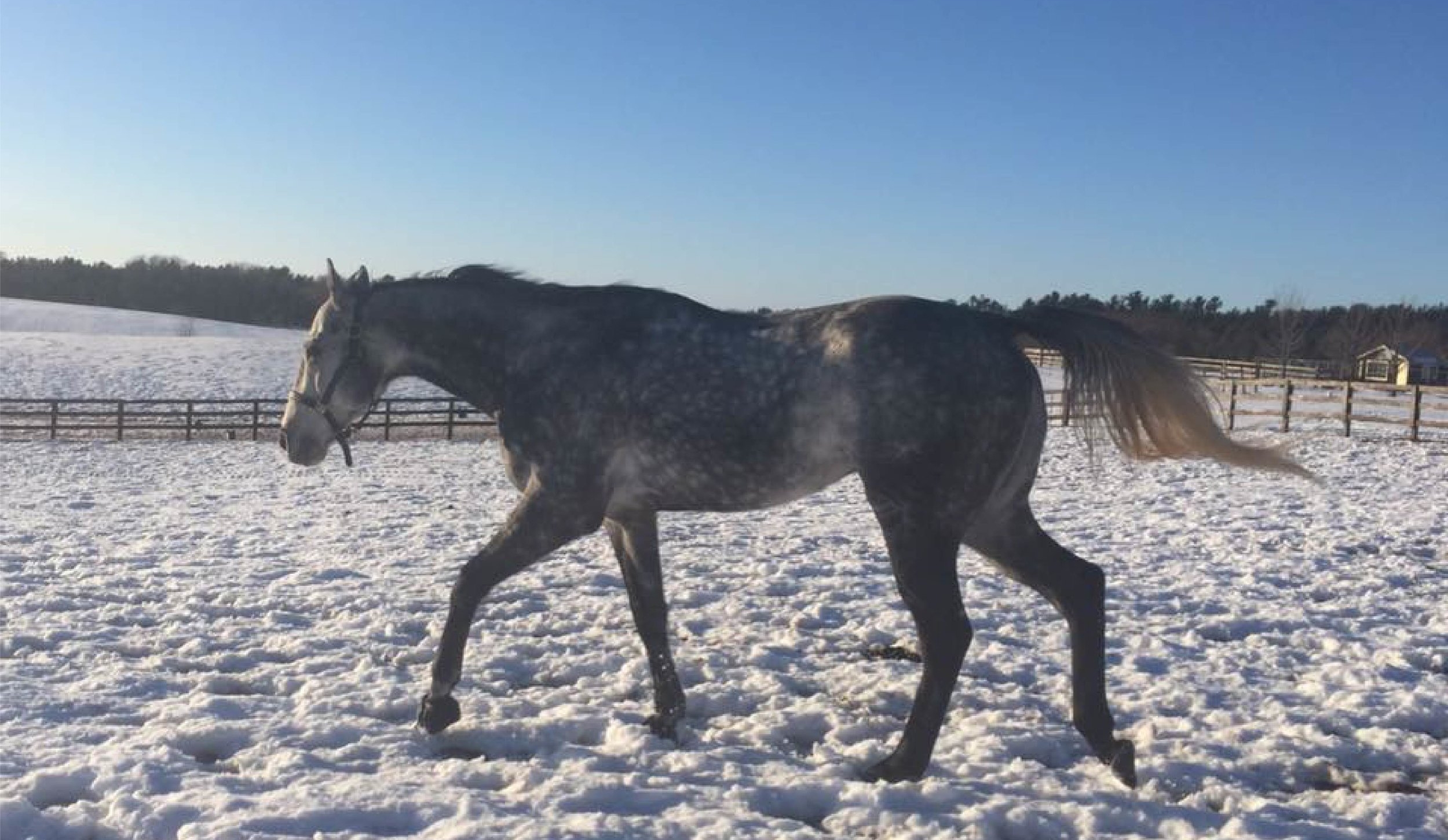Preventing Impaction Colic
While impaction colic isn’t caused by cold weather, it tends to be more common in the winter months due to the difficulties of maintaining a natural equine lifestyle. Dehydration is a leading factor of causing impaction colic. Horses tend to consume less water in the winter months. They are no longer receiving hydration from pasture grass, which has a water content of around 75%, and because the air is cooler they aren’t sweating as much, which leads to less water consumption. Other causes and ways to decrease the likelihood of impaction colic are listed below.
Preventing Dehydration
- Make sure your horses have access to water 24/7. Salt/Electrolyte/Mineral blocks can also encourage increased water consumption.
- Prevent your tanks and pipes from freezing. There are many different types of water bucket and tank heaters available to purchase. If you’re handy, the internet has plenty of DIY versions as well!
- Soaking hay in winter will increase water intake
Feeding a Winter Diet
- It is a myth that increasing grain in winter will give your horse more energy to stay warm. In fact, you should be feeding more than 60% forage. High quality hay provides the high-fiber and complex carbohydrates that horses are designed to digest.
- Just like in Spring, you can increase the likelihood of colic by changing your horse’s diet too quickly. Slowly wean them off pasture and onto their high-quality forage winter diet.
- If your horse is a hard-keeper in winter, consult with your vet before the cold weather hits to formulate a custom diet specific to your horse’s needs.
Activity
- Maintain a consistent exercise routine to keep your horse moving.
- Turnout will also increase your horse’s activity level. Access to paddocks is ideal to get your horse outside, assisting in both gastrointestinal and mental health.
- On days when the footing is too bad, turnout in an indoor arena is a suitable alternative option. Be sure to provide constant access to fresh, clean water!
Exercising in the Cold
Start your winter preparations before it arrives!
Including a warm up and cool down prevents injury and reduces post-workout soreness, but it is especially important in winter when muscles and joints are a bit stiffer. Remember to take your time to thoroughly warm up your horse before getting into your ride. Here are some tips that you can do to ensure a successful work out.
Grooming and Tacking
Take extra time while currying and brushing to help stimulate blood flow to the muscles. Be gentle when tacking your horse. Putting a saddle on cold muscles can be painful. Walking your horse before tacking may be necessary. Also, warm up the bit in your (gloved) hands before bridling. Brain freeze is never fun for anyone!
Pre-Ride
After tacking up, walk with your horse for 5 – 10 minutes in hand around the arena. This will help warm up both you and your horse. Be sure to keep the girth loose so your horse can move freely under their saddle. Tighten the girth in small increments while walking to slowly increase the amount of pressure on your horse’s back.
Warming Up
Begin your ride by walking on a loose rein for 10 – 15 minutes before collecting your horse or moving up to other gaits.
Cooling down
After your ride, a relaxed walk for 10 – 15 minutes will help cool your horse and slow their breathing and heart rate. If your horse is sweaty, you may want to put on a cooler or quarter rug to make the transition of a hot and sweaty workout back to the temperatures outside.
Post-Ride
After your ride, use a cooler to help dry any sweat and help your horse adjust to the cold temperatures post-workout. If you horse is extra sweaty, use a towel or sponge to dry off any excess sweat. Before you put your horse away, make sure their breathing and heart rate are back to normal and that they have stopped sweating.
Remember to listen to your horse! If they struggle with winter work-outs, you may want to restructure your exercise program to less intense, consistent rides.



